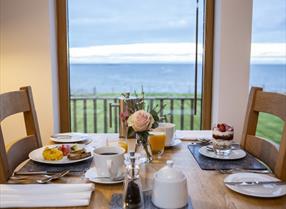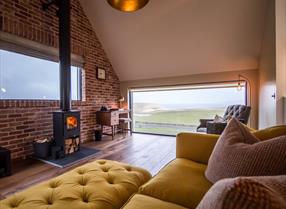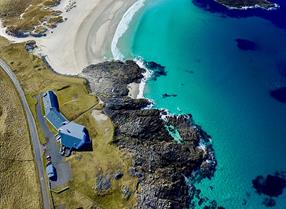Vatersay
The most southerly inhabited island of the Outer Hebrides has a number of attractions that speak to the perilous and vulnerable nature of life on the edge – as well as many examples of the breathtaking island beauty that make the eternal struggle against the elements well worthwhile.
For an idea of the environmental hazards of this Hebridean outpost visit the Annie Jane Monument at the west bay of Traigh Siar and learn how 350 souls sadly lost their lives off these spectacular shores when the eponymous emigrant ship beached here in the severe sea storm of 1853, or head to the shore below Heishival Beag, where the wreck of an RAF Catalina seaplane that tragically crashed on the hill killing three of her nine crew can still be seen.
A well preserved iron age galleried dun situated on hill to the east of Cuier cemetery
While these monuments may commemorate sad events – visitors need only to turn and face the turquoise waters of the Atlantic, easily accessible from the islands many beaches, to be reminded of the hope and beauty that drives island communities in the face of adversity – Bagh Bhatasaigh (Vatersay Bay), Traigh Siar (The West Bay), Traigh Varlish, Caragraich and Bagh a Deas (South Bay) offer wonderful windswept sands bordered by the rich machair grasses which in season are awash with wonderful wildflowers.
This rich and diverse natural environment has appealed to settlers across the centuries. If some communities, such as that which once occupied the deserted village of Eoradail where cotters from neighbouring islands survived for just six decades following the 1909 land raids, found it impossible to sustain their island existence, Neolithic archaeology such as the Dun Caolis burial chamber and the ruined 19th Century Bhatarsaigh or Tacksman’s House (home to Gordon of Cluny’s shepherd and later the local school) testify to the enduring nature of the island’s appeal – as do the current Vatersay inhabitants who are waiting to offer you a warm island welcome.















